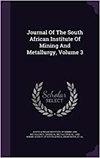高光谱岩心扫描仪:Bushveld杂岩北翼上部磷灰石的有效矿物填图工具
IF 0.9
4区 材料科学
Q3 Materials Science
Journal of The South African Institute of Mining and Metallurgy
Pub Date : 2023-03-24
DOI:10.17159/2411-9717/1890/2023
引用次数: 1
摘要
用于系统矿物测绘的高效、快速和无损的高光谱岩心测井系统的技术进步导致了新矿床的发现和开发。长波红外范围内的高光谱成像最近已成功用于识别各种含磷酸盐矿物(独居石、异长岩和辉长岩),与镁铁质-超镁铁质层状侵入体相关的磷灰石研究有限。在这项研究中,我们研究了具有长波红外(LWIR)带宽的高光谱成像(HSI)系统识别布什维尔德杂岩上部磷灰石的有效性。通过矿物学和地球化学数据验证了HSI结果的准确性。HSI检测到的两个磷灰石富集带表明,磷灰石在上部带最上部600 m范围内广泛发育。下部磷灰石富集区的厚度约为40 m,而上部磷灰石富集区厚度约为23 m,这与之前通过传统测井和分析方法确定的厚度一致。在磷灰石的响应中观察到的光谱混合要么归因于这些岩石中磷灰石和橄榄石的共同结合,要么归因于高光谱图像的空间分辨率和磷灰石颗粒大小之间的差异。VNIR-SWIR波长区域没有显示出磷灰石的显著光谱特征。尽管如此,LWIR范围内的HSI在绘制磷灰石方面是有效的,因此应被视为一种勘探工具。这项研究提高了我们对含REE矿物反射光谱的认识,使HSI更容易检测、识别和量化含REE硅酸盐矿物。本文章由计算机程序翻译,如有差异,请以英文原文为准。
Hyperspectral core scanner: An effective mineral mapping tool for apatite in the Upper Zone, northern limb, Bushveld Complex
The technological advances in efficient, rapid, and non-destructive hyperspectral core logging systems for systematic mineral mapping have led to the discovery and exploitation of new mineral deposits Hyperspectral imaging in the long-wave infrared range has been recently used successfully to identify various phosphate-bearing minerals (monazite, xenotime, and britholite), with limited work on apatite associated with mafic-ultramafic layered intrusions. In this study we investigate the effectiveness of a hyperspectral imaging (HSI) system with long-wave infrared (LWIR) bandwidthsto identify apatite in the Upper Zone of the Bushveld Complex. The accuracy of the HSI results was validated by mineralogical and geochemical data. The two apatite-enriched zones detected by HSI suggesting widespread development of apatite throughout the uppermost 600 m of the Upper Zone. The lower apatite-enriched zone is approximately 40 m thick, while the upper apatite-enriched zone is about 23 m thick, consistent with previous thickness determinations by traditional logging and analytical methods. Spectral mixing observed in the response of apatite is ascribed either to the common association of apatite and olivine in these rocks, or to differences between the spatial resolution of the hyperspectral image and the size of apatite grains. The VNIR-SWIR wavelength region did not show prominent spectral features of apatite. Nonetheless, HSI in the LWIR range is effective in mapping apatite and should therefore be considered as an exploration tool. This research advances our knowledge of the reflectance spectroscopy of REE-bearing minerals, which makes it easier to detect, identify, and quantify REE-bearing silicate minerals by HSI.
求助全文
通过发布文献求助,成功后即可免费获取论文全文。
去求助
来源期刊
CiteScore
1.50
自引率
11.10%
发文量
61
审稿时长
4-8 weeks
期刊介绍:
The Journal serves as a medium for the publication of high quality scientific papers. This requires that the papers that are submitted for publication are properly and fairly refereed and edited. This process will maintain the high quality of the presentation of the paper and ensure that the technical content is in line with the accepted norms of scientific integrity.

 求助内容:
求助内容: 应助结果提醒方式:
应助结果提醒方式:


